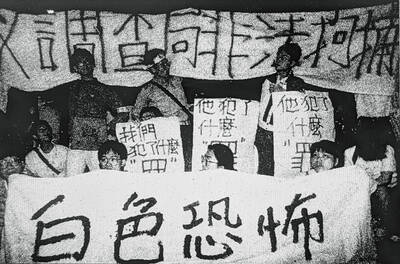A pair of heroines on opposite sides of the world team up in an eye-filling and heartwarming story from Walden Media, the latest in its series of fine films based on popular children’s literature.
Eleven-year-old Nim (Abigail Breslin of Little Miss Sunshine) and her marine biologist father, Jack (Gerard Butler), are the only human residents of a remote but idyllic South Pacific island. While Jack studies nanoplankton, Nim makes the entire island her school, with the animals as her teachers and her friends. Every few months, a supply boat brings another book by her favorite author, Alex Rover, an international man of adventure.
But Alex is really Alexandra (Jodie Foster), a writer so terrified of just about everything that she lives on canned soup, constantly sanitizes her hands, and cannot get far enough outside her front door to retrieve the mail. Alexandra has created a hero who is everything she is not — fearless and always eager to go where he has never been and to try what he has never tried.

PHOTOS COURTESY OF LONG SHONG
To get information for her new book, Alexandra e-mails Jack for details about a volcano he described in an article for National Geographic. But he is away for two days obtaining plankton samples, so Nim answers, thinking she is corresponding with the dashing Alex (also played by Butler, as envisioned by both Alexandra and Nim). By the time Alexandra realizes she is writing to an 11-year-old, Jack is missing and Nim is alone on the island. And the woman who was terrified to walk one meter to the mailbox must go halfway around the world to help her new friend.
Husband-and-wife directors Jennifer Flackett and Mark Levin seamlessly combine adventure, drama, comedy and fantasy as Jack, Nim and Alexandra have to confront their separate but often parallel fears and challenges. As Nim tightens the rope around her waist so that she can climb the volcano, Alexandra is tightening the belt of her robe and gathering her resolve to walk out the front door. All three of them find their determination tested and creativity challenged. And all find assistance from unexpected friends.
Nim is an enormously appealing heroine, and it is especially welcome to have a story about a resourceful and courageous young girl. The film wisely makes her the center of the story in a way that young audiences will find empowering, and Breslin’s unaffected interactions with the creatures and her natural screen presence are a pleasure to watch.

Of the three characters, Nim is closest to the imaginary Alex Rover, confident and capable. She navigates the island by gliding on zip wires like a modern-day Tarzan. She not only swims with the sea lion, she also teaches it to play soccer and boogie. She can fix the solar panels on the roof to get the electricity and satellite uplink back in working order, protect the newborn baby turtles from predators, rappel down the side of a volcano, and make a dinner out of mung beans and mealworms. When the island is invaded by a pirate-themed cruise ship bearing pina coladas, beach chairs, port-a-potties and chubby Australian tourists, Nim and her animal friends set up a Home Alone-style series of booby traps to scare them away.
Butler is fine as Nim’s fond, if distracted father and as the heroic Alex. And it is a treat to see Foster enjoying a comic turn in her first film for families since her Disney days, when she was Nim’s age, and shared the screen with Oscar-winning star Helen Hayes in Candleshoe. Here’s hoping when it is time for Breslin to pass on the torch to a young actress 30 years from now, it will be in a movie as good as this one.

From the last quarter of 2001, research shows that real housing prices nearly tripled (before a 2012 law to enforce housing price registration, researchers tracked a few large real estate firms to estimate housing price behavior). Incomes have not kept pace, though this has not yet led to defaults. Instead, an increasing chunk of household income goes to mortgage payments. This suggests that even if incomes grow, the mortgage squeeze will still make voters feel like their paychecks won’t stretch to cover expenses. The housing price rises in the last two decades are now driving higher rents. The rental market

July 21 to July 27 If the “Taiwan Independence Association” (TIA) incident had happened four years earlier, it probably wouldn’t have caused much of an uproar. But the arrest of four young suspected independence activists in the early hours of May 9, 1991, sparked outrage, with many denouncing it as a return to the White Terror — a time when anyone could be detained for suspected seditious activity. Not only had martial law been lifted in 1987, just days earlier on May 1, the government had abolished the Temporary Provisions Effective During the Period of National Mobilization for Suppression of the Communist

Hualien lawmaker Fu Kun-chi (傅?萁) is the prime target of the recall campaigns. They want to bring him and everything he represents crashing down. This is an existential test for Fu and a critical symbolic test for the campaigners. It is also a crucial test for both the Chinese Nationalist Party (KMT) and a personal one for party Chairman Eric Chu (朱立倫). Why is Fu such a lightning rod? LOCAL LORD At the dawn of the 2020s, Fu, running as an independent candidate, beat incumbent Democratic Progressive Party (DPP) lawmaker Hsiao Bi-khim (蕭美琴) and a KMT candidate to return to the legislature representing

Fifty-five years ago, a .25-caliber Beretta fired in the revolving door of New York’s Plaza Hotel set Taiwan on an unexpected path to democracy. As Chinese military incursions intensify today, a new documentary, When the Spring Rain Falls (春雨424), revisits that 1970 assassination attempt on then-vice premier Chiang Ching-kuo (蔣經國). Director Sylvia Feng (馮賢賢) raises the question Taiwan faces under existential threat: “How do we safeguard our fragile democracy and precious freedom?” ASSASSINATION After its retreat to Taiwan in 1949, the Chinese Nationalist Party (KMT) regime under Chiang Kai-shek (蔣介石) imposed a ruthless military rule, crushing democratic aspirations and kidnapping dissidents from